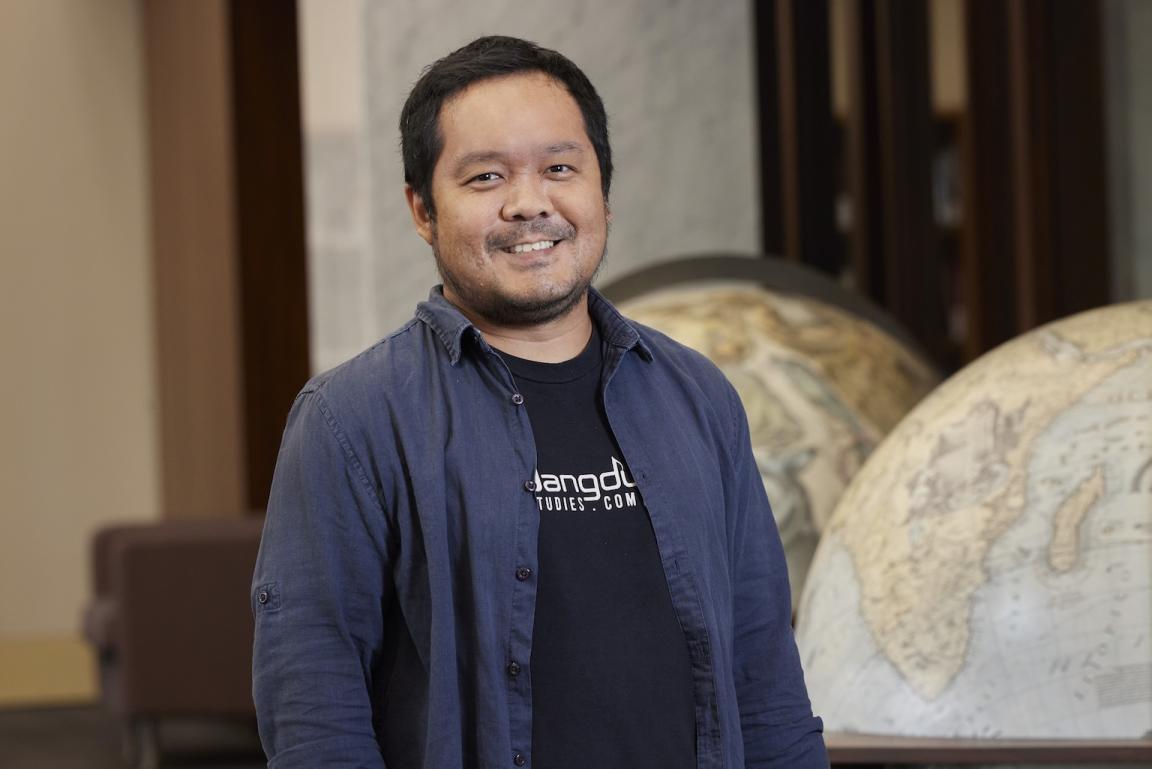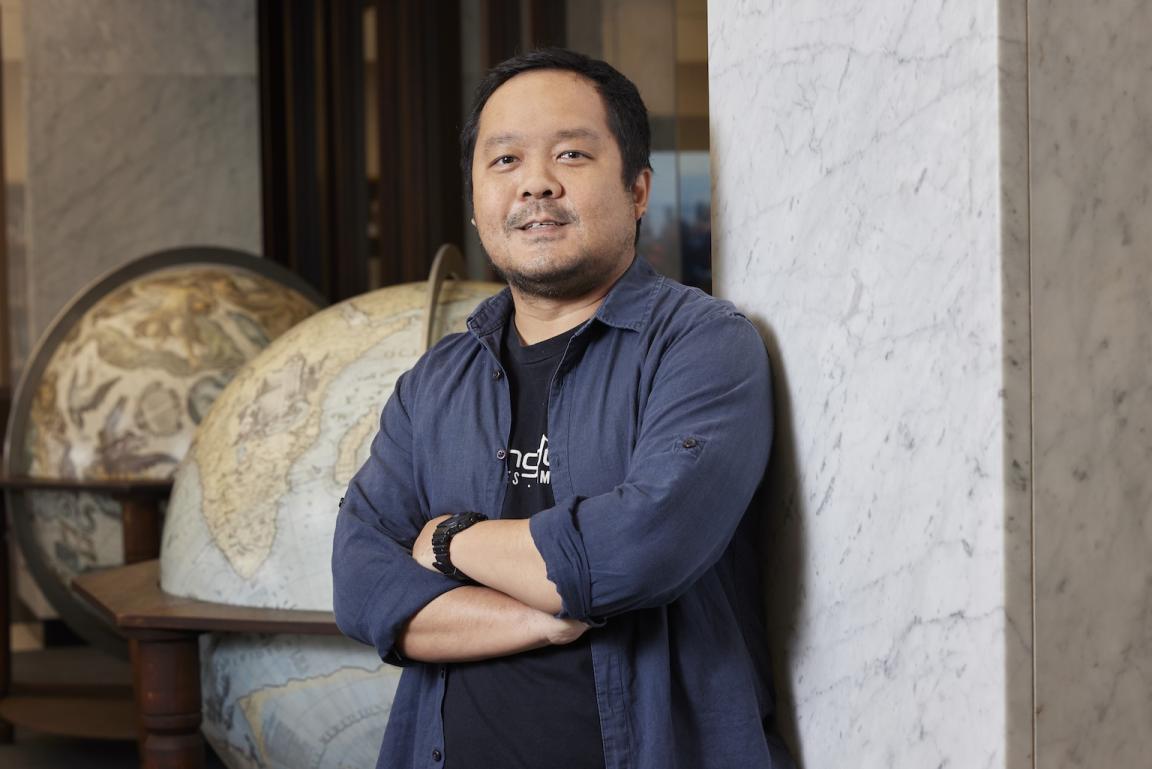Indonesian dangdut music: Evolution, connections, perception
Dangdut, a genre of Indonesian music, has been an interest of Michael Raditya’s since he was a child and is the focus of his work today. Earlier this year, as one of the 2025 Asia Study Grant recipients, Raditya was able to expand his research using the Library’s Indonesian collection.
Learn a bit about his research and time at the Library as an Asia Study Grant recipient.

2025 Asia Study Grant recipient, Mr Michael Haryo Bagus Raditya
2025 Asia Study Grant recipient, Mr Michael Haryo Bagus Raditya
What are you researching and how did you first become interested in this topic?
I am researching Indonesia’s most famous popular music genre: dangdut. At the PhD level, my research delves into dangdut’s relationship with the internet, its audience, and globalization. I analyse how dangdut navigates the digital ecosystem and adapts to new platforms. I also revisit the long-standing stigma of dangdut as "low-class" music in today’s internet-driven world. Does the internet redefine dangdut’s audience? And is dangdut becoming a global phenomenon in the digital era?
My interest in this subject goes back to childhood. When I was six, my father bought a car from his favourite female dangdut singer, Elvy Sukaesih. The car wasn’t in great condition, which often led to my mother getting upset with him. Because of that, I had no interest in dangdut or its universe. But 14 years later, that changed when I watched a dangdut gig in Yogyakarta. The energy was unreal—the connection between the musicians and the audience was electrifying. I realized that music is not just about singing or playing instruments—it carries deep emotions, experiences, struggles, and cultural identities.
My fascination with dangdut also comes from its resilience. This music has existed for over 50 years and continues to evolve. In the internet era, rather than fading, dangdut has found new achievements, such as attracting fresh audiences and maintaining its relevance. While many older music genres focus on preservation, dangdut adapts to every era—not just surviving but thriving, staying dynamic, and continuously reinventing itself.
Why did you want to research at the National Library?
It might be a cliché to say that the Library holds an almost complete collection of Indonesian music resources, particularly on dangdut, but it’s true. I found books there that I couldn’t even access while I was in Indonesia. During my time at the Library, I had the opportunity to explore a wealth of other references: magazines, newspapers, microfilms, cassettes, DVDs, and more. These resources deepened my knowledge and sharpened my perspective and analysis.
What did you find most surprising about the collection material you were working with?
One of the most surprising aspects of the collection was discovering the international connections that dangdut musicians had built in the past. In the 1990s, there were programs like Dangdut Made in Japan and Dangdut Made in Malaysia, where dangdut was not only performed but also composed in those countries. There was also a joint album, Puteri Dangdut, featuring singers from Indonesia, Malaysia, and India. These projects showcased the dynamism of the dangdut music industry and its global reach. What surprised me most was that these connections weren’t just casual encounters—they were true collaborations, blending cultures and creating deeply intercultural works.

2025 Asia Study Grant recipient, Mr Michael Haryo Bagus Raditya
2025 Asia Study Grant recipient, Mr Michael Haryo Bagus Raditya
Fascinate us with a story about something you discovered...
At the National Library, I spent hours reading newspapers and magazines, both national and local. What struck me the most was the stark difference in how they portrayed dangdut. National media, like Kompas and magazines, such as Gatra and Tempo, seemed to have an agenda—highlighting the positive side of dangdut, helping to reshape its image and counter the negative stigma attached. Local newspapers told a different story. They reported everything: the good, the bad, and the chaotic.
It reminded me of Benedict Anderson’s theory of Imagined Communities: how news helps shape people’s understanding of their nation. But here, I saw something different. Local news wasn’t just reflecting a national identity; it was showing the untold, the messy, the real. That realization pulled me deeper into the archives, making me want to see dangdut not just through the lens of grand narratives but through the eyes of the people who lived it.
How are you planning to use what you’ve discovered through our collections?
I have two plans for using the Library collections. First, I will incorporate the data and evidence into my PhD thesis, allowing for a sharper and more in-depth analysis. Second, I will use these resources to develop my initiative and use the data as a foundation for creating podcasts, infographics, discussions, and articles. This way, the valuable materials I’ve gathered from the Library can be shared with a broader audience especially those interested in dangdut music.
Why would you recommend Library research programs to others?
I highly recommend them to others because of how fantastic the residency experience is. The Library offers an outstanding collection and excellent facilities, including offices, access to resources, and, most importantly, a team of incredibly helpful staff.
I would also encourage researchers to consider the Library, especially those studying popular culture, popular music, and traditional music—an area often underestimated by scholars focusing on social, political, or economic. The Library holds an impressive collection on Southeast Asian culture, making it a valuable resource for a wide range of research topics.
The Asia Study Grants program provided researchers and PhD students with opportunities to research our Asian language and Asia-related collections.
While this program is no longer offered by the Library, researchers and PhD students working in the field of Asian Studies are able to apply for the National Library of Australia Fellowships and National Library of Australia Scholarships programs.
Visit us
Find our opening times, get directions, join a tour, or dine and shop with us.